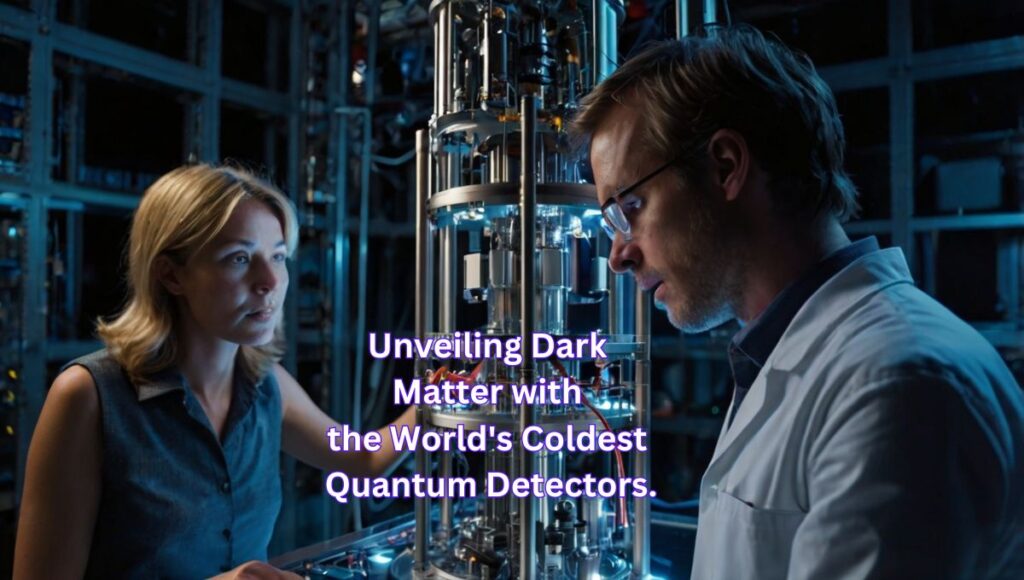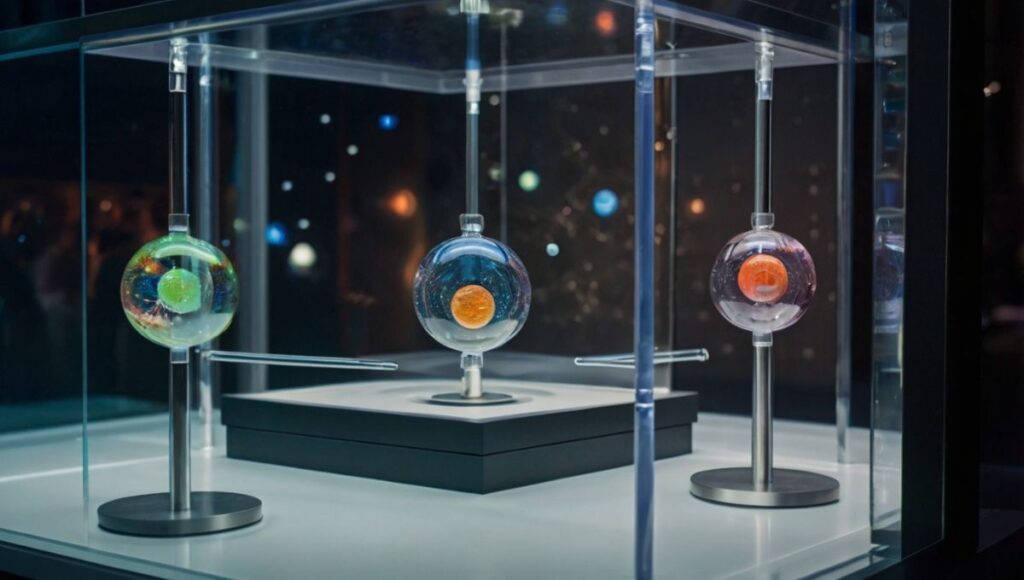One of science’s greatest enigmas, dark matter, might be closer to being understood. Comprising about 80% of the universe’s matter, dark matter remains unseen, constantly passing through us at a rate possibly in trillions of particles per second. We know of its existence through its gravitational effects, yet direct detection has eluded us.

Leveraging cutting-edge quantum technology, scientists from Lancaster University, the University of Oxford, and Royal Holloway, University of London are developing the most sensitive dark matter detectors ever built.
Their exhibit, “A Quantum View of the Invisible Universe,” is featured at this year’s Royal Society’s Summer Science Exhibition from July 2–7, 2024. Complementary research is also published in the Journal of Low Temperature Physics.
Pioneering Researchers and Their Quantum Quest–
The research team includes Dr. Michael Thompson, Professor Edward Laird, Dr. Dmitry Zmeev, and Dr. Samuli Autti from Lancaster; Professor Jocelyn Monroe from Oxford; and Professor Andrew Casey from RHUL.
EPSRC Fellow Dr. Autti commented, “We are utilizing quantum technologies at ultra-low temperatures to create the most sensitive detectors yet. Our aim is to observe this enigmatic matter directly in the laboratory, addressing one of science’s biggest mysteries.”
The Elusive Nature of Dark Matter–
While there is indirect observational evidence of dark matter’s density in our galaxy, the mass of its particles and their interactions with ordinary atoms remain unknown. Particle physics proposes two primary dark matter candidates:

new particles with ultra-weak interactions and very light wave-like particles known as axions. The team is developing experiments to search for both types.
Quantum Technologies Enhancing Dark Matter Detection–
Of the two candidates, particles with ultra-weak interactions could be identified through their collisions with ordinary matter. The success of such an experiment depends on the mass of the dark matter particles being studied.
Previous searches could detect particles weighing between five and 1,000 times more than a hydrogen atom, potentially missing much lighter candidates.
The Quantum Enhanced Superfluid Technologies for Dark Matter and Cosmology (QUEST-DMC) team is striving for unprecedented sensitivity to detect collisions with dark matter particles with masses between 0.01 to a few hydrogen atoms.
Their detector, made of superfluid helium-3 cooled into a macroscopic quantum state, is equipped with superconducting quantum amplifiers, merging these technologies to detect extremely weak dark matter collision signatures.
Searching for Axions with Quantum Precision–
If dark matter consists of axions, these particles would be exceedingly light—over a billion times lighter than a hydrogen atom—but far more abundant. While direct collisions with axions can’t be detected, scientists can search for an electrical signal produced when axions decay in a magnetic field.
This requires an extraordinarily sensitive amplifier operating at the precision limit of quantum mechanics. The Quantum Sensors for the Hidden Sector (QSHS) team is developing such an amplifier to detect axion signals.
Engaging the Public with Quantum Science–
At this year’s exhibition, visitors can explore dark matter through interactive exhibits. A gyroscope-in-a-box demonstrates how we infer dark matter by observing galaxies, while transparent glass marbles in liquid showcase how invisible masses can be detected through innovative experiments.
A light-up dilution refrigerator illustrates the achievement of ultra-low temperatures, and a model dark matter particle collision detector simulates the behavior of our universe if dark matter behaved like normal matter. Visitors can also search for dark matter with a model axion detector and create their own parametric amplifier using a pendulum.
Cosmologist Carlos Frenk, Fellow of the Royal Society and Chair of the Public Engagement Committee, encourages visitors to engage with the exhibits: “Science is vital in helping us understand the world—past, present, and future. I urge visitors of all ages to join with an open mind, curiosity, and enthusiasm to celebrate the incredible scientific achievements benefiting us all.”
By merging advanced quantum technologies and public engagement, these researchers are paving the way toward a deeper understanding of the universe’s dark matter, bringing us closer to unraveling one of the cosmos’s most profound mysteries


